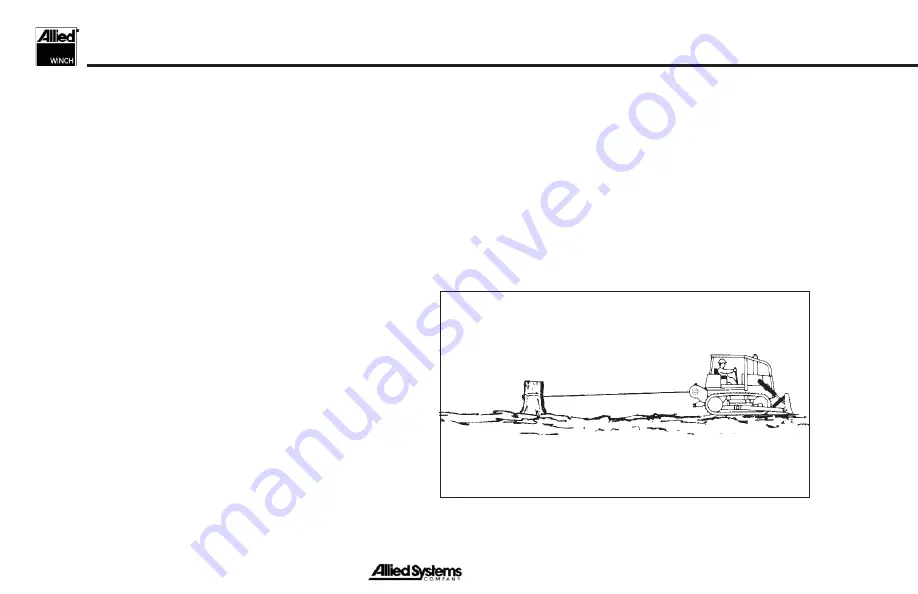
46
How to Move a Disabled Vehicle
A.
A tractor or skidder often travels in areas where traction
conditions are bad. A vehicle equipped with a winch can
be used to remove itself from mud or other areas where
it cannot move using only the drive wheels or tracks. See
Figure 18. Use the following procedure:
1.
Fasten the winch wire rope to a structure, tow bar of
another vehicle, or a tree that has enough strength for
the line pull. The wire rope must be in a direction that
is approximately parallel (preferably slightly upward)
to the direction of travel of the vehicle.
2. Use the throttle to set the engine speed at a power
level to operate both the winch and the tracks or drive
wheels. (Operator experience is required, because
the winch can use most of the engine power in some
vehicles.)
3. Use the
LINE-IN
control lever to tighten the winch
wire rope. When the wire rope is tight, put the vehicle
transmission in
REVERSE*
and engage the tracks
or drive wheels. Use the power from the engine to
the winch and tracks together to remove the vehicle
from the bad area.
4.
If the vehicle travels faster than the winch winds the
wire rope, disengage the transmission until the winch
wire rope is tightened again.
* NOTE: If the tracks or drive wheels on the vehicle stop
turning, the torque converter in the transmission has
stalled and the winch will stop also. If this happens,
put the vehicle in neutral to operate the winch.
Figure 18 - Moving a Disabled Vehicle (Step A)
Summary of Contents for W12E
Page 13: ...xi Safety Summary Notes...
Page 14: ...xii Notes...
Page 37: ...23 Figure 10 Operator Electronic Controls Operation Electronic Controls...
Page 51: ...37 Intentionally Blank Maintenance...
Page 55: ...41 Operating Techniques Power Controls Intentionally Blank...
Page 59: ...45 Operating Techniques Electronic Controls Intentionally Blank...
Page 65: ...51 Operating Techniques General Intentionally Blank...
Page 68: ...54 Notes...
Page 69: ......





































